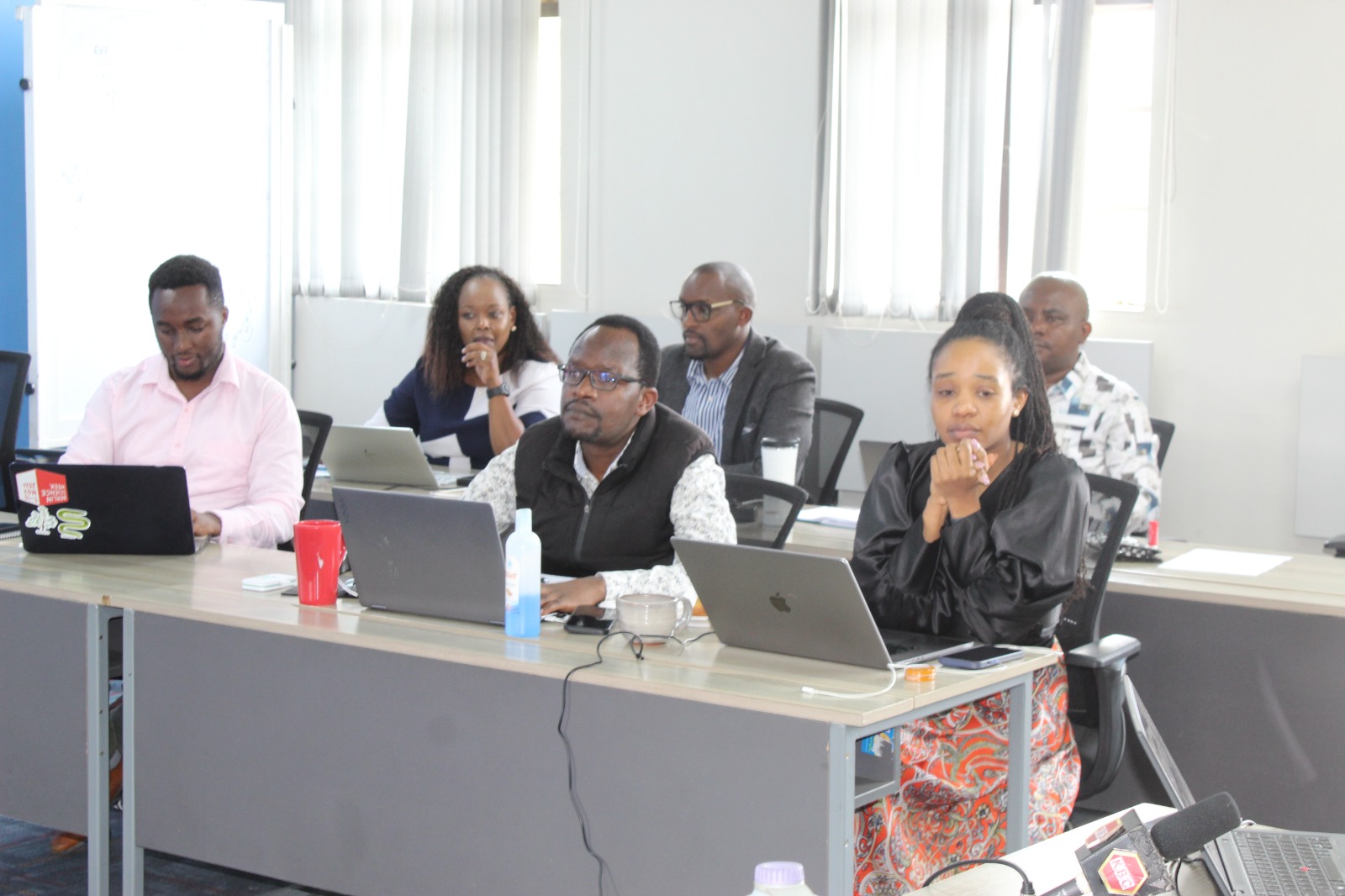 Experts during the CEMA media workshop in commemoration of World Zoonoses Day.
Experts during the CEMA media workshop in commemoration of World Zoonoses Day.
Zoonotic diseases, which are illnesses transmitted from
animals to humans, have increasingly become a pressing public health issue in
Kenya and across Africa, experts say.
The diseases are silently spreading across Kenya,
threatening both lives and livelihoods. Experts warn of rising outbreaks and
call for urgent action to prevent the next public health crisis.
As the world marked World Zoonoses Day on July 6, the
Centre for Epidemiological Modeling and Analysis (CEMA) brought together
journalists and researchers in Nairobi to reflect on the burden of zoonotic
diseases in Kenya
The experts noted that zoonoses account for approximately
60 per cent of all infectious diseases in humans and over 75 per cent of new and emerging
diseases globally. In Kenya, the public health and socio-economic impacts of
these diseases are particularly severe in rural and pastoral communities, where
close interactions between humans, livestock, and wildlife are common.
According to Dr. Pauline Gitonga, a senior research fellow
at Cema, the situation is enhanced by environmental degradation, population
growth, increased demand for animal protein, and changing climatic conditions.
“As human and animal populations continue to expand and
overlap, the risk of disease spillover becomes inevitable,” she said.
Kenya has prioritised the most critical zoonotic diseases
affecting its population through a national study conducted by medical and
veterinary experts. According to the 2015 prioritization report, the top five
zoonotic diseases in the country are anthrax, trypanosomiasis, rabies,
brucellosis, and Rift Valley fever.
According to Dr Martha Luka, a postgraduate researcher at
the University of Glasgow, Rabies remains a critical public health concern,
despite being preventable through vaccination. It is estimated to cause around
1,200 deaths annually in Kenya.
“Rabies is 100 per cent preventable, yet once symptoms appear, it
becomes fatal. With sustained mass dog vaccination and accessible post-exposure
prophylaxis, elimination is within reach,” she asserted.
Brucellosis, a bacterial infection caused by Brucella
species, primarily affects pastoral communities where the consumption of raw
milk and contact with animal birth products is common. Dr Mulei Muema
highlighted the hidden toll of brucellosis on both health and nutrition.
“Brucellosis not only causes prolonged illness and joint
pain in humans, it also reduces livestock fertility and milk production,
worsening food insecurity. Multi-sectoral efforts such as milk pasteurization,
improved diagnostics, and community sensitization will help curb the disease,”
he stated.
Rift Valley Fever (RVF), transmitted by mosquitoes, is
another significant zoonosis in Kenya as noted by the researchers during the
presentation. They said, periodic outbreaks of RVF affect both livestock and
humans, sometimes leading to fatalities and severe economic losses. The
2006–2007 outbreak cost Kenya an estimated USD 32 million. Climate change and
increased rainfall patterns have contributed to the expansion of mosquito
habitats, thereby inreasing the risk of future outbreaks.
The workshop also explored emerging threats such as
Chikungunya and Middle East Respiratory Syndrome Coronavirus (MERS-CoV). Dr.
Doris Nyamwaya, an assistant professor at the London School of Hygiene and
Tropical Medicine, presented findings from Kilifi County showing recurrent
Chikungunya infections among children, often misdiagnosed as malaria because of
having similar symptoms with malaria.
Brian Ogoti, a Cema research fellow, discussed the presence
of MERS-CoV in Kenyan camels and the implications for human health. Although no
human clinical cases have been reported in Kenya, camel abattoir workers have
shown signs of past exposure to the virus, indicating a potential risk of
spillover.
A recurring theme during the workshop was the challenge of
weak surveillance systems. Dr. Samuel Kahariri noted that only 10% of counties
in Kenya have functional community-based disease reporting structures.
“Many cases go unreported due to lack of awareness, poor
diagnostics and fragmented data collection. Better integration of human, animal
and environmental health data, adoption of digital surveillance tools and
improved lab capacity to detect zoonotic diseases early will help alleviate the
situation,” said Dr Kahariri.
He further called for adoption and strengthening of the One
Health approach as a model of preventing zoonotic diseases.
He said, “this model recognizes that human health is deeply
interconnected with animal and environmental health. By fostering collaboration
between ministries, research institutions and communities, Kenya can respond
more effectively to zoonotic threats.”
He emphasized the need for mass vaccination campaigns,
public education, biosafety practices, robust diagnostic capacity and policy
frameworks that support coordinated surveillance and response efforts.
The burden of zoonotic diseases in Kenya is not only a
health issue but also an economic and developmental concern. The growing risks
are driven by human encroachment on natural habitats, poor livestock management
practices, climate change and inadequate public health infrastructure. However,
with integrated, evidence-based interventions and political commitment, Kenya
can significantly reduce the impact of zoonotic diseases.
“Protecting animal health is safeguarding human health.
There is only One Health, and it is our shared responsibility to uphold it,” Dr
Gitonga said.











